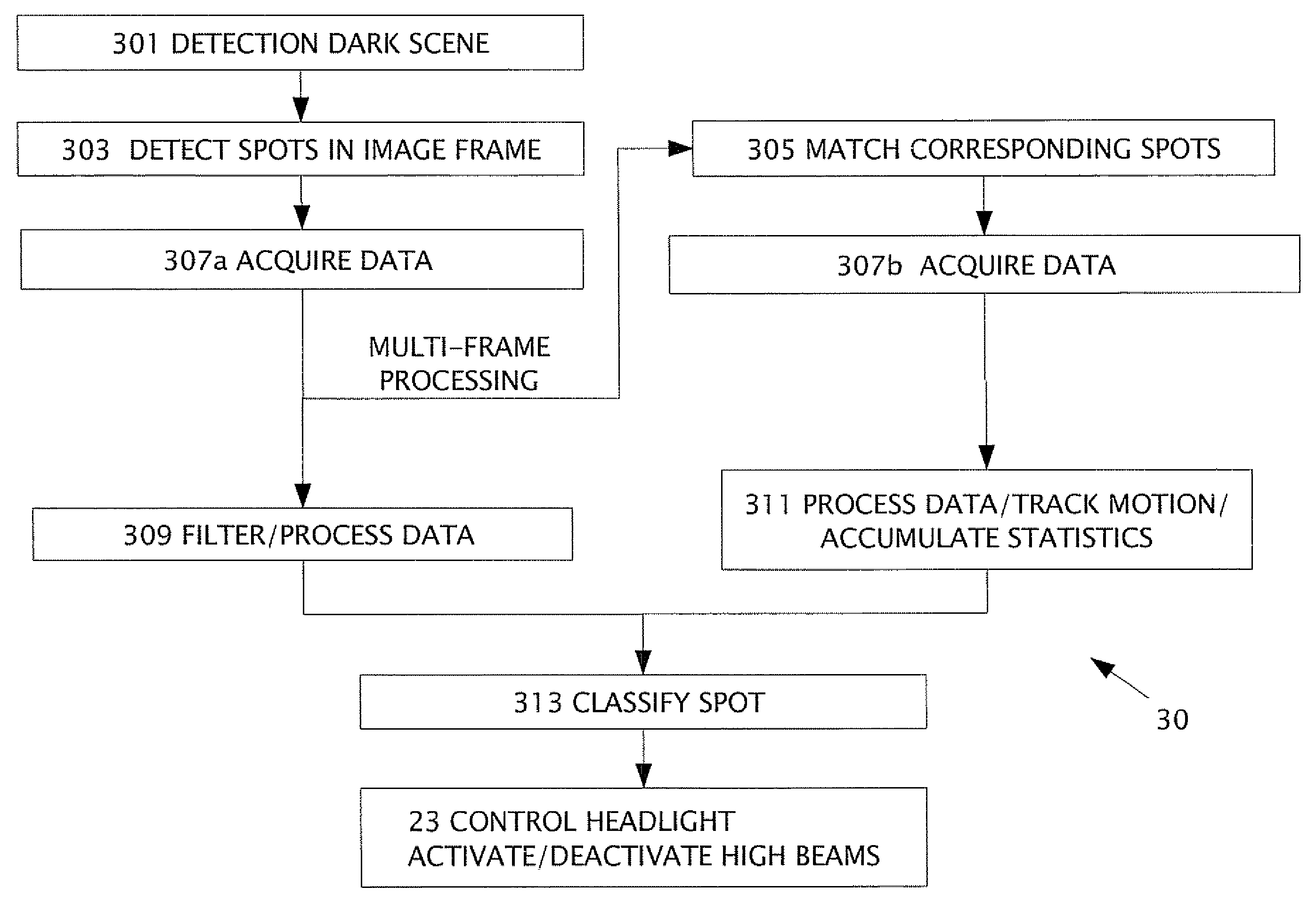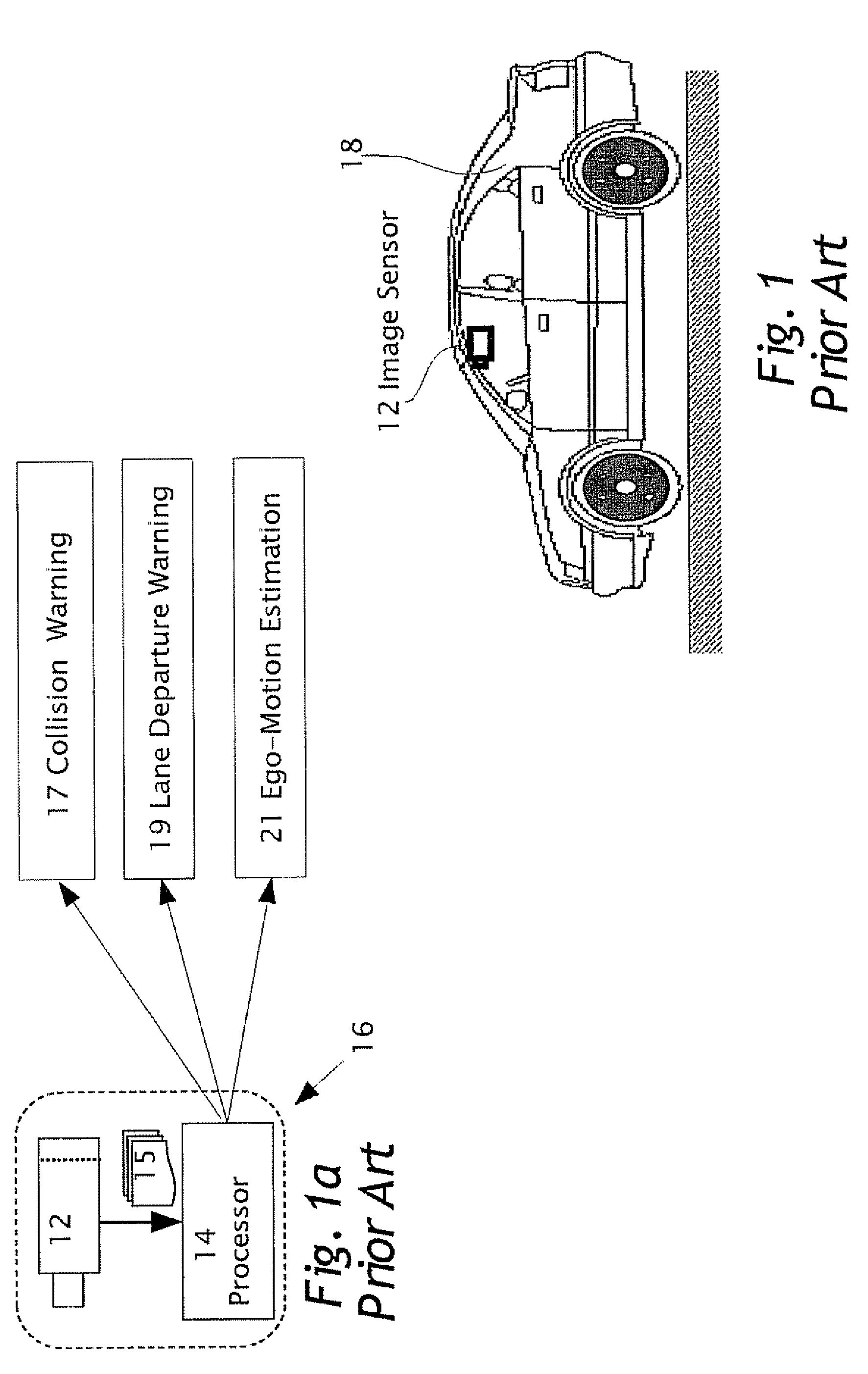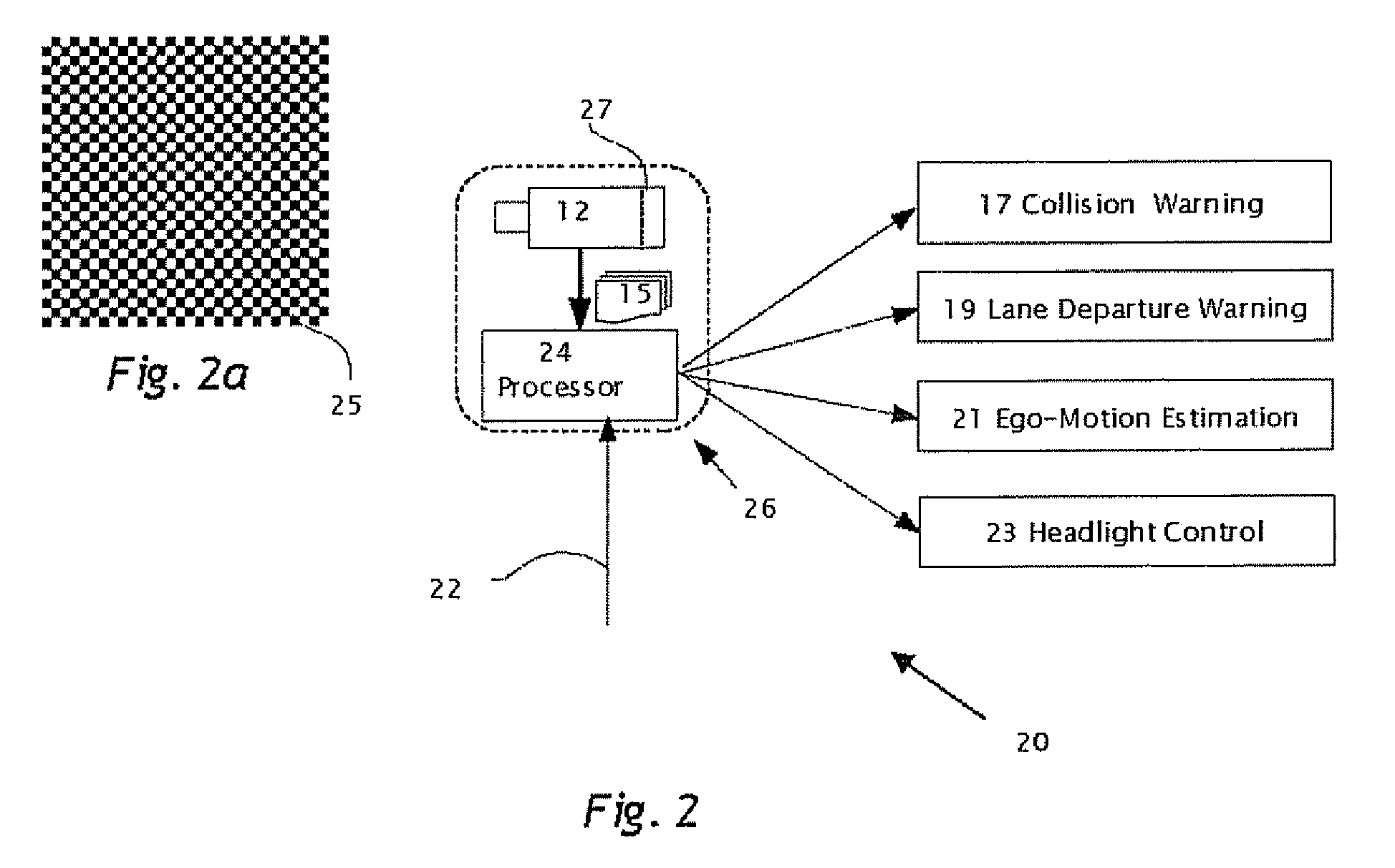Headlight, Taillight And Streetlight Detection
a technology of headlights and streetlights, applied in the direction of optical radiation measurement, instruments, transportation and packaging, etc., can solve the problems of affecting the performance affecting the maintenance time of the other control system which rely on the same, and half or more of the (possibly critical) frames may not be available for the other control system
- Summary
- Abstract
- Description
- Claims
- Application Information
AI Technical Summary
Benefits of technology
Problems solved by technology
Method used
Image
Examples
Embodiment Construction
[0033]The present invention is of a system and method for detecting and classifying objects in real time, e.g. oncoming vehicle headlights, leading vehicle taillights and streetlights, in a series of image frames 15 obtained from a camera mounted on an automobile to provide a signal for switching the headlights between high beams and low beams, specifically with image frames 15 available for use by other vehicle control applications
[0034]The principles and operation of a system and method of detecting and classifying objects in real time, in a series of images obtained from a camera mounted on an automobile to provide a signal for switching the headlights between high beams and low beams, according to the present invention, may be better understood with reference to the drawings and the accompanying description.
[0035]Before explaining embodiments of the invention in detail, it is to be understood that the invention is not limited in its application to the details of design and the a...
PUM
 Login to View More
Login to View More Abstract
Description
Claims
Application Information
 Login to View More
Login to View More - R&D
- Intellectual Property
- Life Sciences
- Materials
- Tech Scout
- Unparalleled Data Quality
- Higher Quality Content
- 60% Fewer Hallucinations
Browse by: Latest US Patents, China's latest patents, Technical Efficacy Thesaurus, Application Domain, Technology Topic, Popular Technical Reports.
© 2025 PatSnap. All rights reserved.Legal|Privacy policy|Modern Slavery Act Transparency Statement|Sitemap|About US| Contact US: help@patsnap.com



